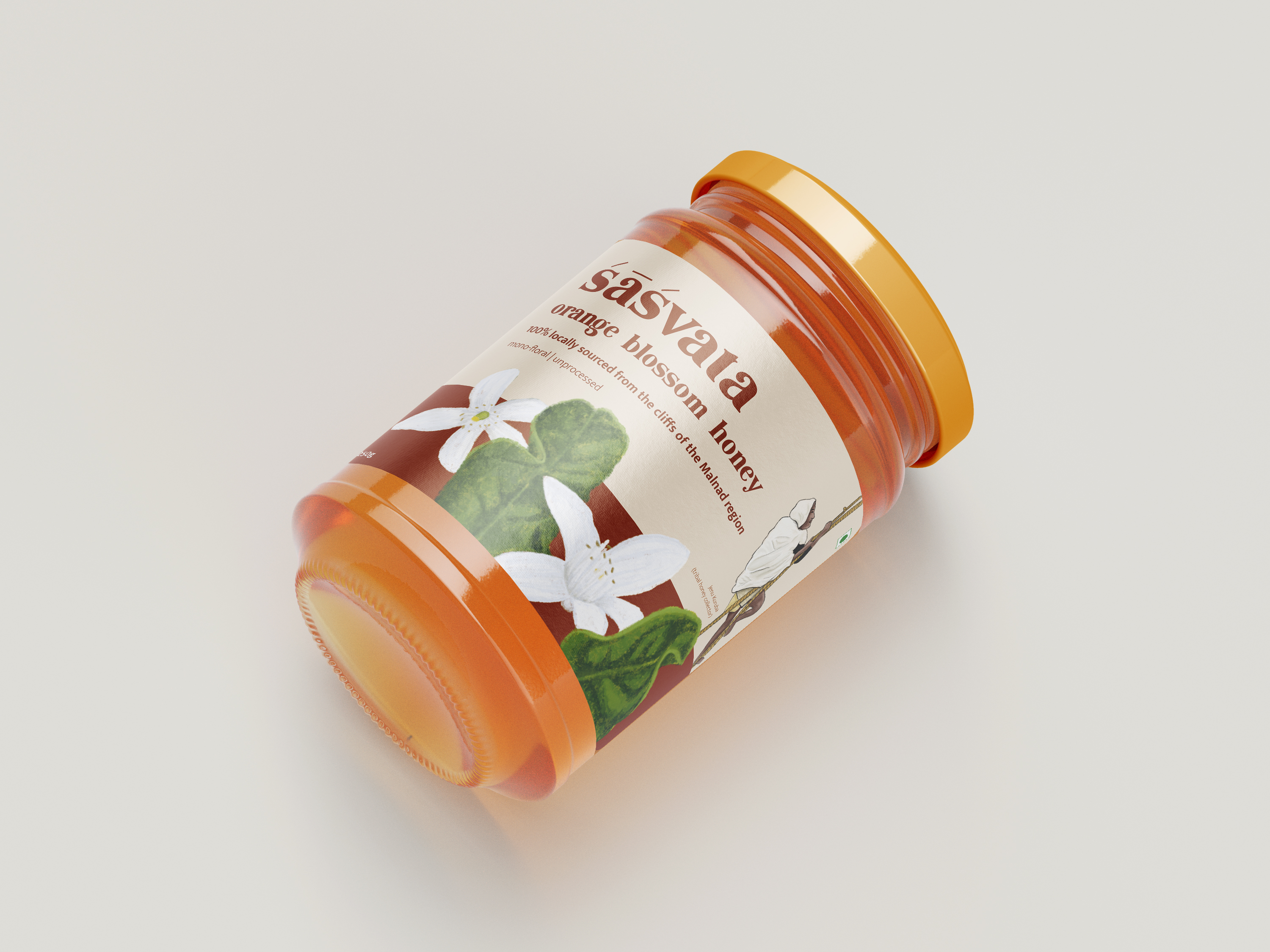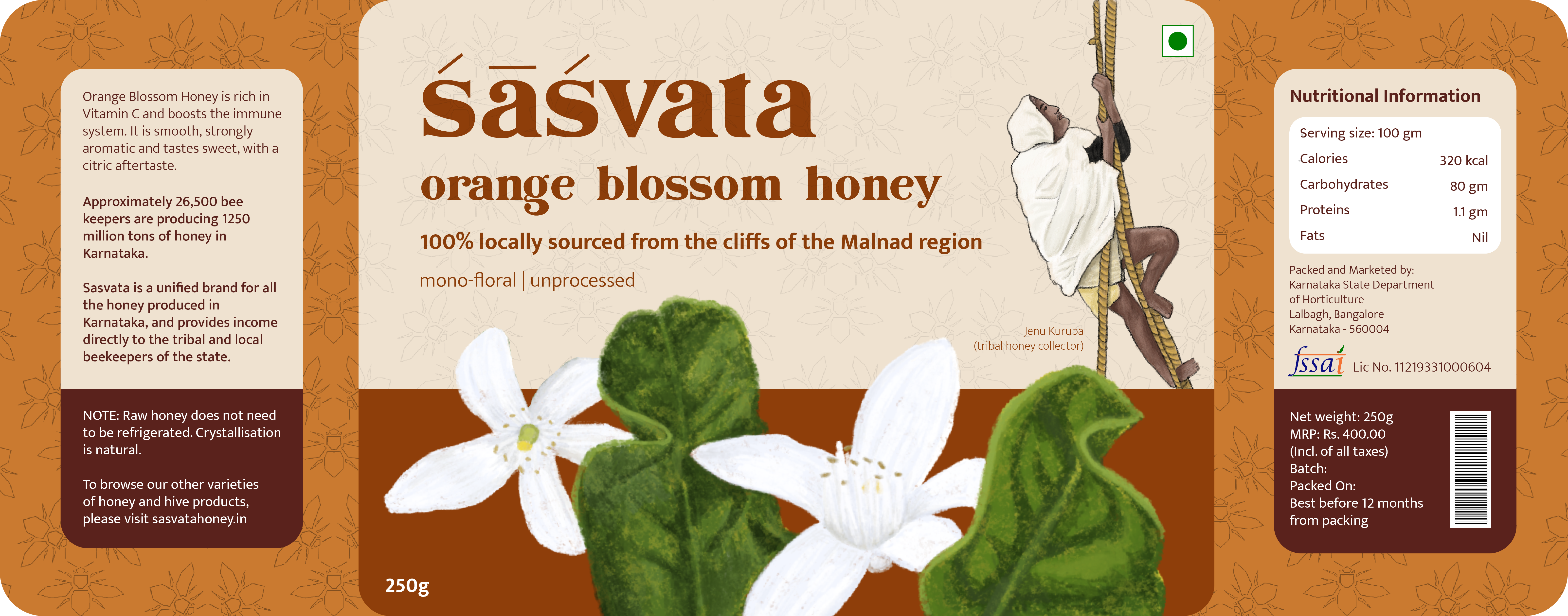Sasvata Honey
PackagingThis project was a response to a tender put out by the Karnataka State Department of Horticulture (KSDH) to design branding and packaging that would unify all honey and hive products made in Karnataka. The brief was to break through clutter in the existing market, promote local, and encourage sophistication and health.
There has been a long history of honey collection in the Western Ghats and Malnad region of Karnataka - comprising Hassan, Chikmaglur, Coorg and Shimoga. Coorg honey is so famous that it is an intrinsic part of the local culture and folklore, with the honey collectors singing songs during harvest. It is also home to several bee nesting trees. The diversified bee-flora in Southern Karnataka (forests as well as agri-horticultural crops) supports bee-keeping throughout the year.
Tribal communities, such as the Jenu Kurubas (which directly translates to ‘honey collectors’) scale rock cliffs to access the hives of Apis dorsata, or the rock bee. Their philosophy includes the belief that honey from their forests are sacred.
 Free mockups from mockups-design.com
Free mockups from mockups-design.comBased on the level of processing, honey can either be raw (natural and pure, often granulated or chunked) or processed, when it is heated and bottled, which often results in the loss of vitamins. Raw honey also contains 4.3% more antioxidants and improves liver function.
Monofloral honey, according to industry standards, is honey in which 50% of nectar is collected from one type of flower. These types of honey have distinctive tastes and aromas that relate to the source flower.
Multifloral honey on the other hand is derived from bees that pollinate multiple flowers, and often has several different tasting notes.





Packaging for two types of monofloral honey - orange blossom and cardamom









I chose the Sanskrit word ‘Sasvata’ for the brand name, which signifies ‘eternity’, for two reasons - firstly, honey itself never spoils and sustains life by boosting immunity, and secondly, the occupation of honey collection is traditional and is often passed down generationally through families.
In order to stay away from the usual imagery of bees associated with honey, I placed a pattern of bees in the background and chose to highlight the honey collector of the Jenu Kuruba tribe, honouring their tradition and keeping the people at the centre of the brand.
Some of the competitor brands I studied for this project were The Last Forest, and Honey and Spice.
In order to stay away from the usual imagery of bees associated with honey, I placed a pattern of bees in the background and chose to highlight the honey collector of the Jenu Kuruba tribe, honouring their tradition and keeping the people at the centre of the brand.
Some of the competitor brands I studied for this project were The Last Forest, and Honey and Spice.
Cargo Collective, Inc. Los Angeles, Calif.